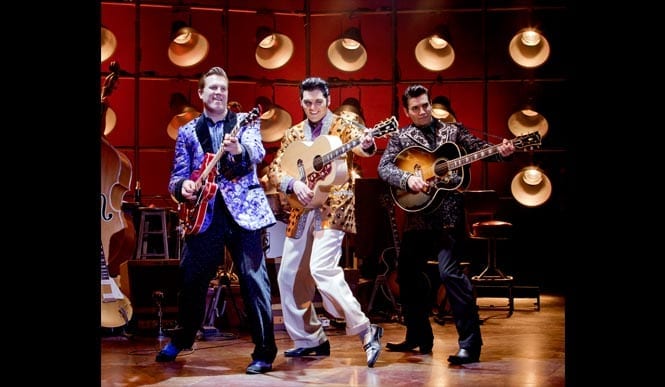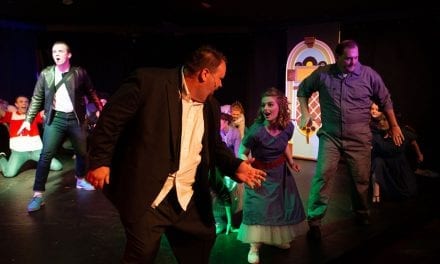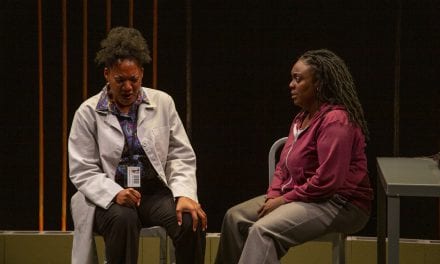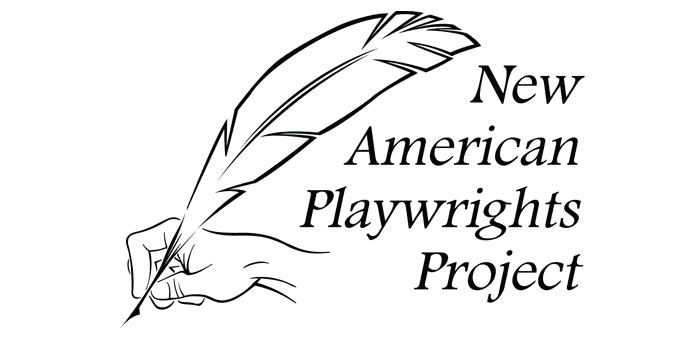SALT LAKE CITY — My dream vacation is a trip to New York City. We’d stay in some posh hotel, try lots of new restaurants, take in the feel of the city, and most of all spend tons and tons of money on Broadway. Dressed in our best, my husband and I would see every play we could squeeze in, because a Broadway play is the best of the best. What a yummy dream, and while I wait for it to come true, I’m lucky enough to live in a state where Broadway comes to visit. Thank you Broadway Across America for bringing Million Dollar Quartet to Utah under the direction of Eric Schaeffer.
Based on an actual event in December 1956, this musical depicts the one-time recording session of Carl Perkins, Johnny Cash, Jerry Lee Lewis, and Elvis Presley. The four artists weren’t exactly friends (there is plenty of conflict in the show), but their love of music, and their passion for creating it, made them a team that night. Million Dollar Quartet helps the audience better understand these legendary performers, and how each started their career with Sam Phillips at Sun Records.
The show opened with a group performance of “Blue Suede Shoes.” Brightly lit, in front of a shining and colorful set, the four main characters told me loud and clear that this was going to be a memorable night. They were absolute beacons of talent and I couldn’t wait to see more.
The story was woven just right. Narrated by Sam Phillips (played by Christopher Ryan Grant), each of the stars enters the set and the story one by one. Moments from the past, scenes from the present (1956), and all those glorious songs are pieced together so well. Onstage, a bass player (Jay Perkins) and drummer (Fluke) play nearly the entire show, even during dialogues and asides. Along with Jerry Lee’s (Martin Kaye) piano accents here and there, this musical continuity added to an already wonderful script.
Each actor in the Quartet excelled in singing, really performing those songs, became those historical characters in every way, and played an instrument. Maybe that was what it was like to watch Elvis, Johnny, Jerry Lee, or Carl in person: I was just astonished at these four men. Although all four were extraordinarily talented, they were surely helped by Kai Harada, their excellent sound designer, making them sound like a million bucks. Harada’s work was phenomenal and flawless. The actors looked great, too, thanks to costume designer Lane Greenwood. In the first number, I thought Lee Ferris (who actually played Carl Perkins) looked like Johnny Cash, but one glance at Derek Keeling’s all-black ensemble corrected me. I loved Elvis’ wide cream pants, and the individual character of each artist’s sparkly jacket. Hair and wig design (Tom Watson) was impeccable; I really did not even think of wigs until I saw the actors after the show.
I adored the set by Derek McLane: the recording studio at Sun Records, which remained constant throughout the show. I loved the dark red and gold of the walls, the wonderful textures he used, and the instruments set up within the room. Staging and lighting takes us off to the side for narration, into an alleyway to smoke, or back to another day when each artist found Sam. Howell Binkleys’s lighting was just right for each moment; I enjoyed the vibrant musical numbers, and the blue toned first meetings. Such artistry.
I wish I had been familiar with Carl Perkins and Jerry Lee before the show; I’m sure it was twice as great for those who knew all four. But it was clear when Johnny Cash (Derek Keeling) showed off that lower register, and when Elvis Presley (Cody Slaughter) twirled that left leg, that they had major fans in the audience. They were four such different characters, in speech and mannerisms, in musical style. I learned a lot about each one and was inspired to learn more. For instance, I found out that stage Elvis’ girlfriend Dyanne wasn’t a real person, but was loosely based on a girl that real Elvis was dating at that time. She has only recently been tracked down, and she actually lives part-time in Salt Lake City.
Dyanne (Kelly Lamont) was great, by the way, as the only female on stage. Her character was so sweet and demure interacting with the men, but when she sang, some light switch turned on and she became a firecracker. She was sexy in her songs, so adoring of Elvis, and a voice of encouragement for Sam. I appreciated that someone took a minute to take care of Sam. Played by Christopher Ryan Grant, Sam is the heart of Sun Records and has invested all he has financially and emotionally into his recording artists. He is portrayed as a loving mentor under a lot of stress, smoking cigarettes for comfort, and loving the music.
The songs of Million Dollar Quartet are so different from the music we hear today, and I loved hearing them. They were about blue suede shoes, trains, and a brown-eyed handsome man. I much prefer their style of singing about life, to the club music of today: putting hands in the air, or saying the word baby a hundred times. The wonderful songs were projected into those great old microphones. And each artist had fun individual mannerisms, too. That amazing piano player, Jerry Lee Lewis (Martin Kaye), bounced all over while he played and sang. He was like a hyper little kid, except with buckets of talent.
Those real musicians—stars—that lived in the spotlight for a time, each came from not much and rose to success. All sold tons of records, and all entered the Rock and Roll Hall of Fame. In the show, Sam says that he wished they’d had happier lives, and notes that, “Success don’t make the problems go away.” This story, written by Floyd Mutrux and Colin Escott, was told so well and the way it ends, at the piano, was so poignant.
Million Dollar Quartet was like the most beautiful, colorful, juicy hamburger you’ve ever eaten. There was nothing fluffy or cute about it—just lick-your-lips amazingness from beginning to end. I spent most of it grinning like an idiot, or shaking my head in disbelief. The encore blew me away; I was nearly in tears.
Thank you so much for visiting, Broadway. I’ll return the favor sometime.







